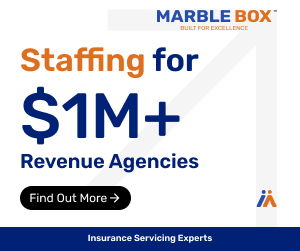Waiting Period for Tax Entity Conversions
Just before recessing for the holidays on December 18, 2015, Congress passed the Protecting Americans from Tax Hikes Act of 2015 (“the PATH Act”), which the President signed shortly thereafter. One of the permanent tax provision changes has to do with S corporations that were previously C corps.
Agencies that are C corporations can run into significant tax issues when selling to a third party. Most buyers insist on an asset sale so that they can amortize the purchase price and so they don’t acquire hidden or unknown liabilities. However, an asset sale of a C corporation can result in double taxation for the seller, whereas the asset sale of an S corp, an LLC, or a sole proprietorship is taxed one time at the capital gains rate.
Prior to the PATH Act, a seller had to wait ten years after converting from a C corp to an S corp before getting full tax treatment as an S corp. Failure to wait for the full waiting period results in the sale being subject to the built in gains tax at a flat 35%. With the PATH Act, this waiting period is permanently changed to five years.
As a result, all agencies that converted from “C” to “S” status before January 1, 2011 can sell anytime after January 1, 2016 and be treated as an “S” corporation. For those agencies that converted sometime during 2011, make sure you don’t sell your assets until after you have completed the full five years.
While this potential change doesn’t help you if you are still a C corporation, you should seriously consider converting to S status as soon as possible to start the clock running on the waiting period. To convert to an S corporation all you need to do is file a Form 2553 within 75 days after the end of your fiscal year. You should also consider having your agency valued by a third party so that you can limit the amount subject to the built in gains tax should you sell before completing the waiting period.
Capital Gains Tax
While the capital gains rates have stayed the same, effective January 1, 2016 the capital gains brackets have changed. The 15% capital gains bracket is for those married filing jointly with a modified adjusted gross income (MAGI) of $466,950 or less. Any capital gain that exceeds this MAGI threshold is taxed at a 20% rate. For taxpayers filing as Single the threshold is $415,050. But it’s not as simple as just looking at the capital gains amount. You also need to factor in the rest of your income.
Assume the capital gain you receive in 2016 from the sale of your agency is $250,000 and you have $100,000 of other income. It’s simple, your capital gains rate is 15%. But what if you have a capital gain of $250,000 and $250,000 of other income? Then $216,950 of the capital gain is taxed at 15% and $33,050 is taxed at 20% (assuming you are married filing jointly). And if you have $250,000 of capital gain and $500,000 of other income? The full $250,000 of capital gain is taxed at 20%.
To reduce your capital gains tax liability you may want to take the income over time by structuring it as an installment sale. While you should receive interest on the amount due (which is required by the IRS) also consider the risk of the buyer failing to make payments to you. Is it worth it to save on taxes if there is significant risk that you won’t get paid?
Unearned Income / Affordable Care Tax
In addition to the capital gains tax, there is also an additional 3.8% tax on unearned income (which includes capital gains). This 3.8% tax is on unearned income in excess of $250,000 for a married couple or $200,000 for an individual. It functions the same way as the capital gains tax in that you must look at your MAGI. If you have $250,000 of capital gains and no other income, you don’t pay the tax. But when you combine the capital gain with your other income, you pay 3.8% of tax on every dollar of capital gain that exceeds the $250,000 MAGI threshold.
Summary
Whether you are selling your agency now or keeping it for many years, tax planning can be very complex. Don’t stay as a C corp because “that’s what I’ve always been.” Speak with a tax professional. A little bit of planning now can save you hundreds of thousands of dollars in the future.
About the Author:
Jon Persky, CIC, CPA, PHR
Jon is the President of Optimum Performance Solutions, LLC (www.optperform.com), an insurance agency consulting firm providing valuation, merger and acquisition, agency perpetuation, strategic planning, and marketing and retention services to insurance agencies nationwide. Jon is on the national faculty of the Society of Certified Insurance Counselors and lectures on agency management topics throughout the United States. He can be contacted at 813-835-7337 or jon@optperform.com.
Looking to start an Agency? Get detailed information by reading our Guide to Starting an Insurance Agency















